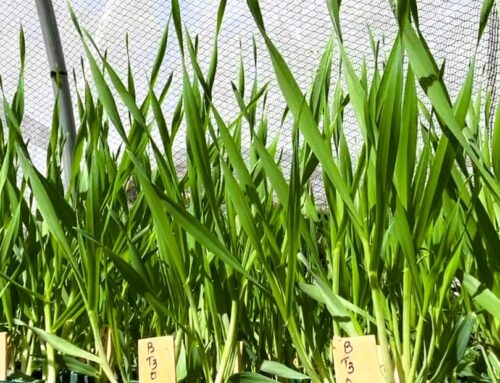In short:
A new study says African boxthorn is the preferred diet and protective home for threatened greater stick-nest rats on Reevesby Island.
The rats were introduced to the island in 1990 as a conservation measure.
What’s next?
Researchers support the eradication of the weed and its replacement with dense low native shrubs for stick-nest rat habitat.
A tiny native rodent that was on the brink of extinction on the mainland has bounced back in the most unlikely of places — an island infested with death adders and tiger snakes.
The rat’s survival on the South Australian island, which it was introduced to more than three decades ago, has been the result of one of Australia’s worst invasive weeds, the African boxthorn.
While other creatures have feared its thorns and impenetrable thickets, the rats have used it for food and shelter, taming its spread in the process.
According to a new research paper based on Reevesby Island, the weed which was a scourge of farming nationally was the preferred diet and protective home for the threatened greater stick-nest rats.
The rats became extinct on mainland Australia by the 1930s after being decimated by feral cats and foxes.
They only survived on the Franklin Islands near Ceduna in South Australia.
They were introduced to conservation park Reevesby Island in 1990 and have since also been introduced to two protective enclosures in New South Wales and Western Australia, numbering 3,000.
The Reevesby Island population fluctuated between 1,000 and 5,000 rats in surveys between 1992 and 2000.
Encouraging discovery
Flinders University science and engineering PhD candidate and lead author of the research, Annie Kraehe, said the small timid animal’s liking for boxthorns was revealed through its droppings collected during a week-long field trip to Reevesby Island in July 2018.
“The highest temperature was 14 degrees and there were still active death adders everywhere, which is a bit terrifying,” Ms Kraehe said.
“I spent weeks poking through the faecal pellets of stick-nest rats to identify microscopic plant remains.
“We then compared the proportion of plants eaten with the availability of potential food plants in the area.
“This showed that African boxthorn, a shrub in the nightshade family indigenous to South Africa, makes just over half of the stick-nest rat’s diet, despite representing just over one-tenth of the available vegetation.
“So that was a huge selection bias — we definitely weren’t expecting that.”
Ms Kraehe said the bias might have been because of nest preference rather than food preference, because the weed offered protection from predation by birds.
“Stick-nest rats are massive homebodies, they’re fat little rodents and they make good meals for pretty much anything,” Ms Kraehe said.
“They don’t really like leaving the protection of their nest so they’ll basically just eat the house, Hansel and Gretel style.”
Ms Kraehe said stick-nest rats were more present in areas with higher boxthorn abundance.
She said scat samples showed they ate the flowers, red berries and leaves.
Weed control
Co-author of the study, Flinders University associate professor Vera Weisbecker, said invasive weeds were damaging to Australia’s biodiversity so it was good news a threatened mammal was thriving in that habitat.
“African boxthorn offers excellent cover from these raptors, so we think that this makes boxthorn thickets a preferred nesting location for the stick-nest rats,” Ms Weisbecker said.
A similar effect was observed for little penguins in South Australia, where African boxthorn provided better protection against cats and foxes than native vegetation.
However the researchers cautioned against perceptions that invasive weeds weren’t as bad as they seemed.
“We completely agree that it is a damaging weed that needs to be controlled,” Ms Kraehe said.
Friends of Reevesby Island Group’s Eric Kotz said National Parks and Wildlife Service staff worked to control the boxthorns on the island.
Mr Kotz said the group’s volunteers had cleared dead boxthorns to re-define established trails on the island, reducing damage to native vegetation.
He said they were advocating for other controls to reduce the spread of seeds.
“We would like to see a starling control program on the island as they are the most likely cause of berry/seed transfers to the mainland,” Mr Kotz said.
University of Adelaide researcher Kathryn Hill said African boxthorn was by no means a good thing, even for the stick-nest rats.
“If it continues to spread, it may displace too much of the native vegetation and lead to a collapse of the island’s ecosystem, ultimately affecting the greater stick-nest rats themselves,” Dr Hill said.




